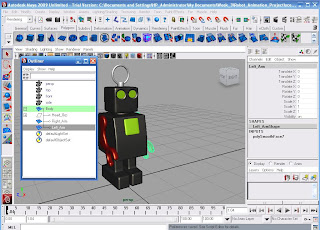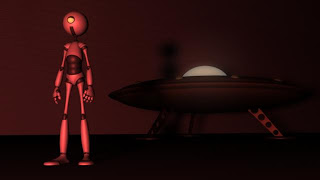The Cabinet of Dr CaligriI will start with the somewhat dark, atmospheric tale of “the cabinet of Dr Caligari”. This film is very expressionistic and the visual content is most enlightening. This film was based on Hans Janowitz and Carl Mayer's screenplay and directed by Robert Wiene. The story is that of a flashback which is depicted by the narration of the character "Francis". Francis and his friend Alan go to visit a carnival where they meet Dr Caligari and his zombie like hypnotised subject the somnambulist Ceaser. When displaying an act at the carnival, the Dr brags that his sleeping side kick can answer any question given to him, therefore Alan decides to ask how long he has to live. The outcome of this question is somewhat chilling and to the point, he will die before dawn the next day. This analysis of Alan's fate becomes true, as he is brutally murdered in his sleep the night of the prediction. Francis, who alongside his girlfriend Jane, decide to investigate further into the suspicion surrounding Alan's death with the somnambulist. Through this lead, Dr Caligari decides to make Ceaser kill Jane, yet the sleepwalking hit-man is captivated by her beauty, and gives into the heat of the moment. In this event Jane is whisked away by Ceaser, chased by village folk until Ceaser falls to his death during the pursuit. Amusingly enough, Dr Caligari had a dummy version of Ceaser to distract Francis while this incident was taking place. Francis then comes to discover how Caligari directs an insane asylum where he is discovered to have an obsession for the story of Dr Caligari, a notorious killer who used a somnambulist to do his bidding. Right at the end of the film we witness a twist in the tale, the whole film being a flashback which is based on a fantasy that Francis depicts in his mind, that Caligari is really his Dr for a mental health problem and through the information provided Caligari discovers how he can cure Francis.
I love how dark and awkward this film is, how the camera shots depict certain feelings to help with the elaborated acting and visual enhancement. The sets used for the film are really good too, very expressionistic and colourful, even through black and white visuals.
MetropolisThe second film to talk about is the Sci Fi classic “Metropolis”. This film as ive been told and through instinct can tell, is the original science fiction movie. This film contains so many points which indulge in comparable moments to other well known science fiction films, or even hidden concepts in its display. I find it interesting to witness the view of the future from the people in 1927 when this film was made, obviously due to technological limits they never had the correct visual effects to pull of CG spaceships and transporting beams. I did however think that Metropolis looks farther behind in its technological development than we are in the modern day, yet its suppost to be set in the future from now. Other films can be comparable to this, yet use a different approach. Take for example the film “Space 1999” in which people believed by then we would be almost living in such ways that Star Trek depicts.
The story is based on higher class and lower class, the lower class being slave workers with no names but code numbers for identification, the highest class living above the ground dressed nicely with peaceful lives. This seemingly has been a vision of our future for years, especially in the past. Compare it to the likes of such a film as “Planet of the apes” and you will understand my observation. The story follows Freder, the son to one of the higher class people named Jon Fredersen. Jon, like other people in his situation, are free souls who roam Gardens of peace and tranquillity. A strange mysterious lady named Maria intrudes the Gardens with children, who she says to them “these people are your Brothers”. Maria and her army of children are escorted out of the premises, where Freder decides to follow out of fascination. Freder then comes to end up in a room where machines are being used by lower class workers, one of these machines explodes which claims the lives of a few of the workers. Freder envisions this incident as a fire breathing moloch. Basically, Freder continues his hearty approach at exposing the indecency of the workers and how he cant believe what goes on to keep him content with his life.
There is an inventor named Rotwang, who is creating a robotic female which he believes will be the future of mankind. He needs a test subject, so decides to kidnap Maria and take her to his lair. This is where he transforms the Robot into Marias form in one of the most famous, recognisable scenes in science fiction history. The special effects for the time this was made in this scene is pretty breathtaking, the acting working hand in hand to compliment it.
The robotic figure of Maria then continues in the original Marias place to help “free souls” and show the way to a better life. However, in doing this there is an element of propaganda from Marias behalf, in which she is determined to create havoc as opposed to peace by using approaches of the real Marias wording. The city workers all storm through Metropolis, destroying the machines which corrupt their freedom in life. This however in turn causes a flooding of the city, then the realisation that Maria is an “evil witch” that the workers must kill. They hunt Maria down and burn her at the stake, where she turns into her robotic self. The real Maria, however, has escaped the lair of the inventor and Freder is on the path to try to find her before Rotwang discovers her. An epic chase comes into scene, where Rotwang peruses Maria up onto a roof and Freder, in an intense struggle fight it out until Rotwang falls to his death.
As a result of the social power the meaning of the two figures coming together has, Freder and Maria make an alliance between the rulers and the ruled. The film ends with the quote “THE MEDIATOR BETWEEN THE HEAD AND HANDS MUST BE THE HEART”.
















































